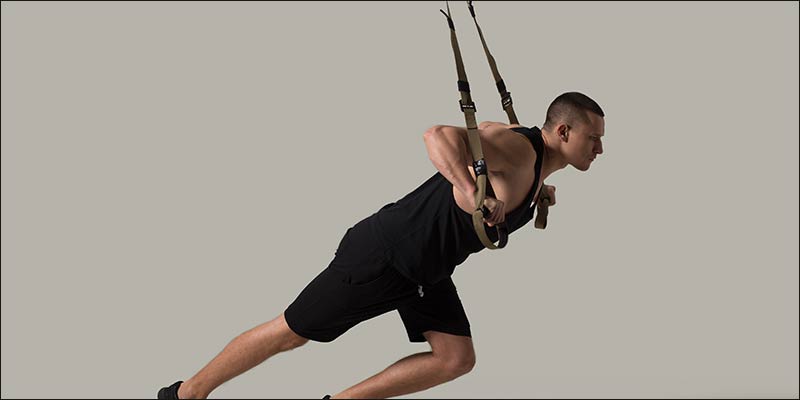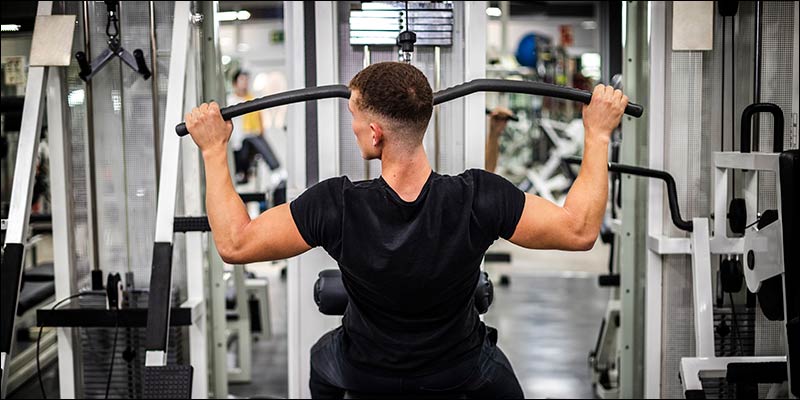If you’re looking to strengthen your back and develop a well-defined, muscular physique, back workouts with cables can be an excellent addition to your fitness routine. Working out with cables provides a versatile and effective way to target the muscles in your back, helping you achieve better posture, increased strength, and a more sculpted appearance.
About Cable Workouts

Cable workouts involve the use of a cable machine, which consists of a pulley system and adjustable weights. These machines offer a smooth and constant resistance that can help isolate specific muscle groups, making them ideal for back workouts.
Benefits of Back Workouts with Cables
Many bodybuilders typically incorporate barbells, dumbbells, and machines into their back workouts. Occasionally, they might switch to cables for a few sets of pulldowns and rows before concluding their routine.
Here are the benefits of Back Workouts with Cables:
Enhanced Muscle Engagement
Cable workouts engage your back muscles more effectively than free weights. The constant tension provided by the cables ensures that your muscles are continuously working throughout the exercise.
Improved Range of Motion
The adjustable pulleys allow for a greater range of motion, enabling you to target various angles of your back muscles effectively.
Versatility
Cable machines offer a wide range of exercises, suitable for both beginners and advanced lifters.
Equipment Needed for Back Workouts with Cables
To get started with cable back workouts, you’ll need access to a cable machine, which is typically available in most gyms. You may also need the following:
- Straight and EZ curl bars
- Handles and attachments
- Weight plates
- Ankle straps
Best Back Workouts with Cables

Lat Pulldowns
The lat pulldown stands as a top-tier exercise for fortifying the lats. If executing pull-ups poses a challenge, this cable back exercise proves to be an excellent addition to your workout routine. It aids in building the essential strength required to conquer bodyweight pull-ups.
Seated Cable Rows
The consistent tension provided by the cables and the specific motion of your arms enable you to apply substantial weight to the cables. This aids in maximizing both your muscle mass and strength gains effectively.
Seated Upper Back Cable Rows
This modified version of the cable back row focuses on engaging the traps, rhomboids, posterior deltoids, and teres major within the rotator cuff muscle groups.
Cable Rope Pullovers
Utilizing cables for sustained tension significantly enhances the efficiency of this lat exercise compared to performing it with a dumbbell or kettlebell.
Straight-Arm Pulldowns
Positioning your body in this exercise expands the range of motion, effectively increasing the duration of tension. This approach aids in strengthening the lats, especially at the end ranges.
Setting Up Your Cable Machine
Proper setup is crucial for cable back workouts. Adjust the pulleys, select your desired weight, and attach the appropriate handle or bar.
Lower Back Workouts with Cables

While numerous freeweight and bodyweight exercises are available for targeting the lower back, cable exercises can also prove highly effective.
Utilizing cables maintains a consistent tension on your muscles, allowing for subtle weight adjustments to ensure an efficient yet safe back workout. Additionally, you have the flexibility to fine-tune your range of motion according to your individual flexibility and mobility.
While many are familiar with traditional barbell stiff-legged deadlifts, performing this exercise with a cable machine can be equally beneficial. Cable stiff-legged deadlifts keep the target muscles constantly engaged, making it a potentially more effective option for certain individuals.
Powerlifters, renowned for their robust lower backs, often rely on the deadlift as a benchmark for back strength. Nevertheless, they frequently incorporate assistance or accessory exercises to address weaknesses and enhance overall powerlifting performance. One such exercise is the cable pull-through, specifically designed to strengthen the posterior chain and contribute to lower back fortification.
Proper Form and Technique
Maintaining the correct form is essential for preventing injury and maximizing results. Ensure your back is straight, shoulders are down and back, and core is engaged during each repetition.
Workout Routine
A sample cable back workout routine could include a combination of the basic and advanced exercises mentioned earlier. Start with 3 sets of 10-12 reps for each exercise, gradually increasing the weight as you progress.
Nutrition and Recovery
For optimal results, fuel your body with a balanced diet rich in protein, and make sure to get enough rest and recovery.
Common Mistakes to Avoid
- Using improper form
- Lifting too much weight
- Neglecting warm-up and cool-down exercises
Progress Tracking
Track your progress by keeping a workout journal and recording the weight, reps, and sets for each exercise.
Back Exercises Cable Pulldown

Cable pulldowns utilize a weighted cable system to focus on the muscles in the back, arms, and abdomen. This compound, multi-joint movement is effective for building strength and necessitates the engagement of your core and abs for balance during execution. The cable machine provides the flexibility to select a weight suitable for your fitness level.
To perform cable pulldowns, attach a cable at the highest point on one end of the cable frame. Utilize any provided hand attachments that enable a two-handed grip on the pulldown handle.
Safety Tips
Prioritize safety by starting with a manageable weight, asking for assistance when needed, and listening to your body.
Variations for Different Fitness Levels
Cable back workouts can be adapted for beginners and advanced individuals by adjusting the weight and reps accordingly.
Incorporating Cable Workouts into Your Routine
Consider integrating cable workouts into your weekly training program to achieve consistent results and maintain a well-rounded physique.
Conclusion
Cable back workouts are an effective way to strengthen and sculpt your back muscles. The benefits of enhanced muscle engagement, improved range of motion, and versatility make cable exercises a valuable addition to your fitness routine. By following proper form, staying consistent, and continually challenging yourself, you can achieve a stronger and more defined back.
FAQs
Q1. Are cable back workouts suitable for beginners?
Yes, cable back workouts can be adjusted to suit different fitness levels, making them accessible for beginners.
Q2. How often should I incorporate cable back workouts into my routine?
It’s recommended to include cable back workouts in your routine 2-3 times a week for best results.
Q3. Can I perform cable back exercises at home?
Cable workouts typically require specialized equipment found in gyms, but some home cable machines are available for purchase.
Q4. What should I eat before and after a cable back workout?
Consume a balanced meal with protein and carbohydrates before your workout and a protein-rich meal for recovery.
Q5. Is it necessary to use various attachments for cable exercises?
Using different attachments can add variety to your workouts and help target different muscle groups within your back.

